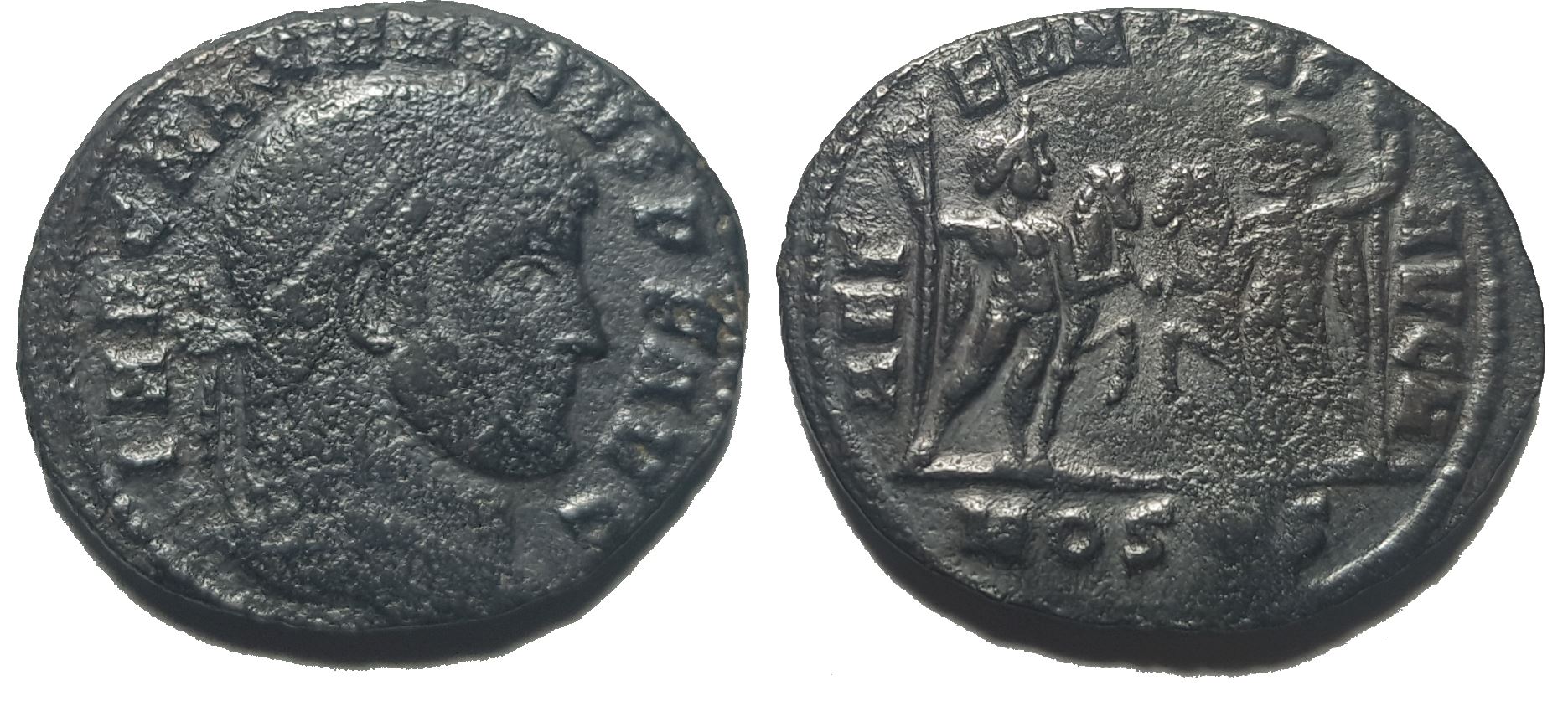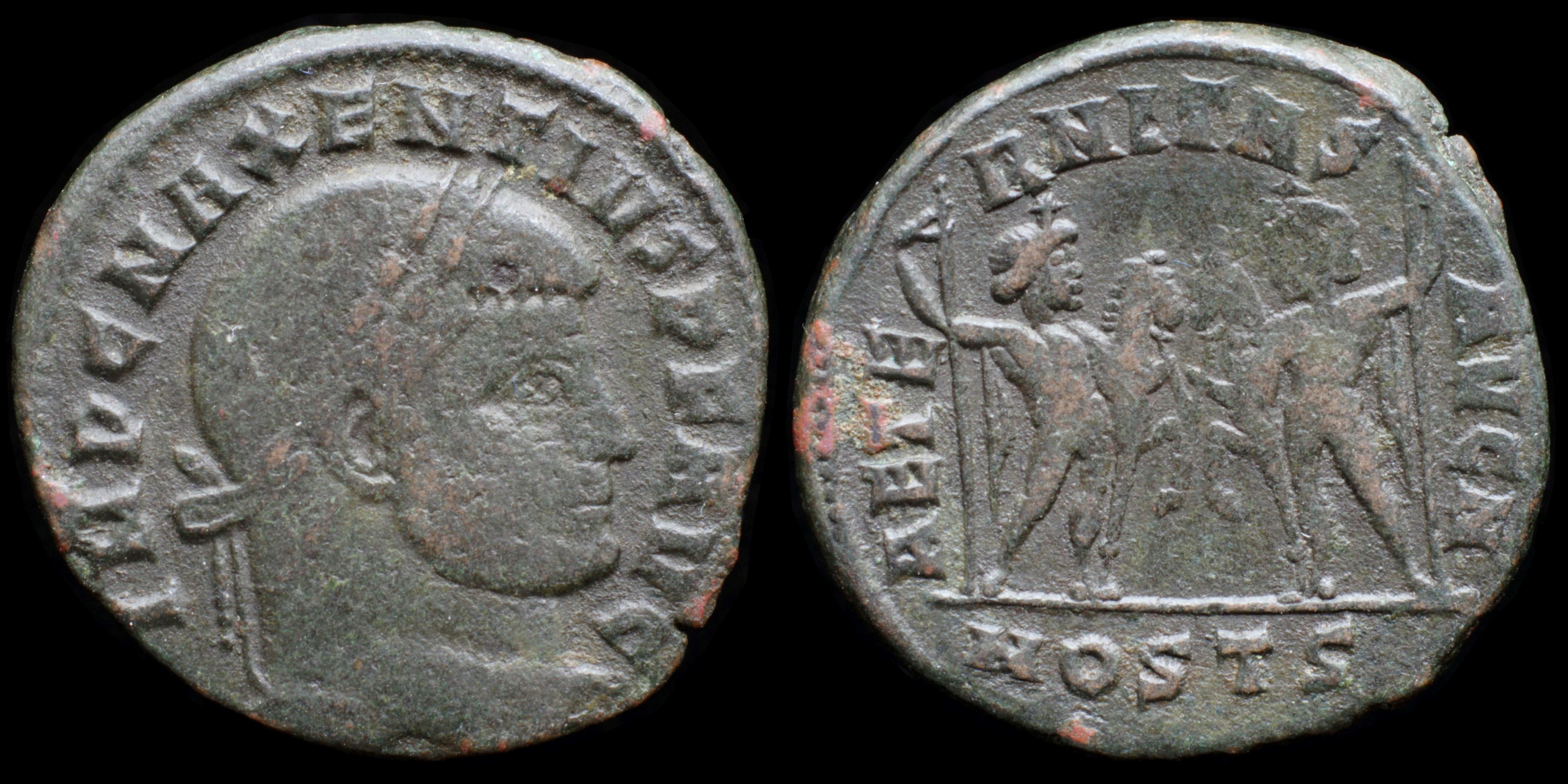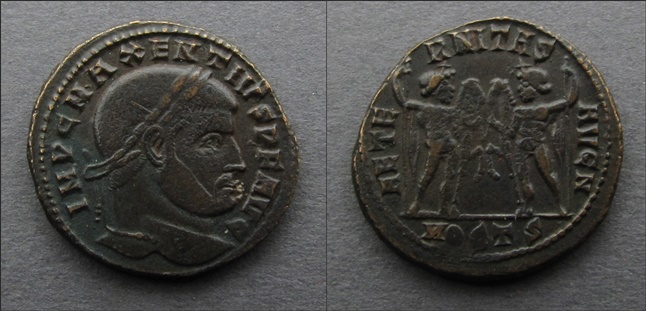Its excellent baths, its good cheer and its healthy site, fanned by the breezes of the Mediterranean, made Ostia a favorite resort with the pleasure-loving Romans.
A mint was moved to Ostia from Carthage in 308 AD, and then transferred from Ostia to Arelate in 313 AD.
Modern location: Ostia, Italy
.jpg)
Reverse: AETERNITAS AVG N, The Dioscuri standing facing each other, each holding sceptre and bridles of their horse
Die Orientation: 11 H
Weight: 7.15 g
.jpg)
Reverse: VICTORIA AETERNA AVG N, Victory wearing drapery, advacing left, holding wreath and palm; MOSTP in exergue
Die Orientation: 5 H
Weight: 6.56 g
The fact that the flan is enormous and the coin has been struck perfectly centered with the full detail including the dotted border on both sides, leads me to believe it's a trial strike of some sort.

Reverse: AETE-RNITAS A-VGN, Castor and Pollux standing facing each other, each leaning on sceptre and holding bridled horse.
Die Orientation: -
Weight: 5.6 g

Reverse: Castor and Pollux, each with star above cap, chlamys over shoulder, leaning on scepter with outer arm, holding bridled horse with inner hand; AETE_RNITAS__AVG N / MOSTS
Die Orientation: -
Weight: 6.3 g

Reverse: AETERNITAS AVG N, the Dioscuri standing facing each other, their horses between; MOSTS in exergue.
Die Orientation: 12 H
Weight: 6.4 g
.png)
Reverse: AETERNITAS AVG N, The Dioscuri Castor and Pollux standing facing each other, each holding scepter and holding a horse by the bridle; MOSTQ in exergue
Die Orientation: 6 H
Weight: 6.05 g
.jpg)
Reverse: AETERNAE MEMORIAE, Domed shrine with one door open, eagle standing facing right on roof; MOSTP in exergue
Die Orientation: 6 H
Weight: 3.82 g
